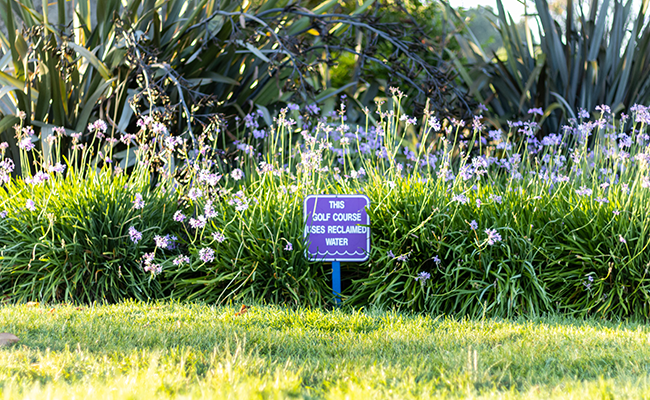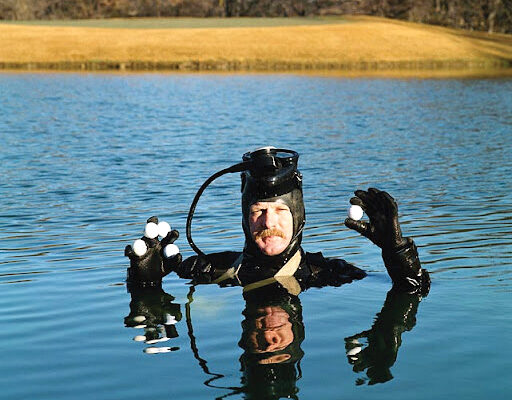A Roadmap for the Environment: Whittier Narrows GC Earns Enviro Cred

In thirsty Southern California, golf courses constantly come up for scrutiny, fairly or unfairly. You know: Water hogs. Wasteful. Let’s turn them into housing tracts. It’s an issue that courses will have to contend with for years to come.
While golfers as individuals and the SCGA as an association wage a multipronged effort to fend off the notion that golf courses compose a “frivolous” use of water, one prong in particular holds widespread appeal as a win-win-win for courses, the environment and the future of golf: Audubon International (AI) certification.
Audubon International is far from a public relations campaign to promote the game of golf, though certification certainly carries PR benefits. AI requires golf courses to meet numerous criteria to achieve certification. These amount to course-management best practices that not only reduce water consumption and the use of harmful chemicals, but also enhance wildlife habitat — all the while saving golf courses manpower, time and money.
Southern California is home to 11 public and private courses that have earned Certified Audubon Cooperative Sanctuary status, the latest being Whittier Narrows GC, a 27-hole public course in Rosemead. Nationally, some 900 courses are certified and 1,800 are member supporters of AI.
“We’re not a regulatory body,” stresses Frank LaVardera, AI’s director of environmental programs. (It is not affiliated with the National Audubon Society, though efforts often align.) “We provide guidelines and principles. We understand that some courses in rural areas might be able to do more than a course surrounded by suburbs. We also know that a lot of courses are doing a wonderful job without certification. I have yet to meet a course superintendent who doesn’t care about the environment, the wildlife, plants and people.”
For Whittier Narrows, the certification process was initiated as a condition in the contract between the County of Los Angeles, which owns the course, and American Golf, which manages it. To achieve its Audubon International certification, Whittier Narrows had to first complete a site assessment, utilizing a handbook provided by AI to detail acreage, water, wetlands, amount of pavement, storage facilities and so on. Then the course had to address five key areas:
▪ Water conservation
▪ Chemical reduction
▪ Wildlife management
▪ Safety
▪ Education
WATER & CHEMICALS
To cut back on water usage, “reducing managed turf is always first and foremost,” says LaVardera. Whittier Narrows achieved that by eliminating turf in a number of out-of-play areas. AI also calls for irrigation audits to inspect equipment, identify leaks, ensure proper distribution — e.g., not watering pavement — and to reduce watering in minimally used areas. In the course of obtaining certification, Whittier Narrows replaced all of its sprinkler heads. The course also uses recycled water.
AI recommends setting annual goals to continue the process — clearly a priority as Southern California contends with the new reality of seemingly permanent drought. Here, technology plays a big role. “Courses are using moisture meters with great success,” says LaVardera. “You might think that dry days mean a course needs more water, but the meter may tell you that it’s not necessary.” AI also recommends using weather data to inform the smart use of water.
Water quality goes hand-in-hand with water reduction. “We require testing on surface waters,” says LaVardera, “to analyze the water quality when it comes onto and leaves the course. In suburbanized areas like Whittier Narrows, it usually comes on in lousy shape and leaves in better condition.”
Related to that, of course, is chemical reduction. For certification, AI recommends best practices for storing, handling and reducing the use of chemicals. Educating maintenance staff is an important component of that. “We inspect chemical storage and wash pads, and make sure that all chemicals used are legal in the state and county and comply with EPA regulations,” says LaVardera. “And, of course, reducing turf area reduces the chemicals. At the same time, we encourage the use of chemicals that have potentially less impact but do essentially the same thing.”
While some courses may resist seeking certification out of budgetary concerns, AI has documented that the average certified course is able to cut overall costs by 10 to 15 percent. How so? “Less turf, less chemicals, less water, less labor, less fuel,” answers LaVardera.
BIRDS & WILDLIFE
As any SoCal golfer knows, golf courses are wildlife habitat (those ducks on the pond, that furtive coyote darting across the fairway), and AI ensures that courses are managed with that in mind. In general, certified courses learn to take inventory of their biodiversity and resident wildlife, and to connect natural areas wherever possible. Guidelines call for at least 80 percent of trees, shrubs and flowers to be native, in order to attract birds and butterflies.
At Whittier Narrows, the wildlife effort includes participation in a UCLA coyote monitoring program and the installation of 55 nesting boxes for birds — which have been happily occupied by various swallows and western bluebirds. The course has naturalized some 22 acres of out-of-play terrain and has placed signs alerting golfers to environmentally sensitive areas.
SAFETY & EDUCATION
Reducing the use of chemicals and ensuring their safe use and storage has an obvious safety benefit for any golf course. As for outreach and education, Whittier Narrows participates in the SCGA Junior program, which introduces kids to golf — notably, kids from urban areas.
Educating the public about Audubon International certification and publicizing the stewardship efforts of golf course managers is an ongoing effort for the entire golf community. “There’s that perception that golf courses are an artificial environment with tremendous environmental impact,” says AI’s Frank LaVardera. “We want to let neighbors know that we’re allowing native species to return, creating more native habitat and planting pollinators.”
The AI certification received by Whittier Narrows puts it nicely: “You have worked hard to meet the criteria established by Audubon International for certification as a Cooperative Sanctuary. By meeting these criteria, you have shown that economic and environmental concerns are not opposing forces. (This) marks the beginning of your commitment to ecologically sound environmental stewardship and sustainable economic development.”











